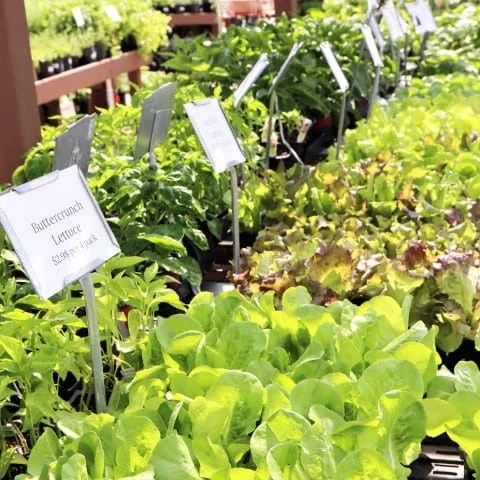by Amanda Rose Newton
You may have noticed our blog has been focusing quite a bit on all things organic and sustainable this fall. With our proximity to the lagoon, the influx of rain, and unique biodiversity right in our own backyards, it’s hard not to have the impacts of our actions at the front of our minds.
November will continue this theme by focusing on getting the most longevity from our gardens through everyday practice and preservation.
This week, we have compiled ten easy actions you can take right now to make your yard more sustainable. On November 8th, be sure to join us for an informal discussion with a panel of county experts on environmentally thoughtful landscape design and practice for more tips and to have your questions answered.
Sustainable Gardening in Florida
1. Watch Your Water
This is one of the easiest ways to cut back your resource use quickly, and often, to the benefit of your landscape plantings. Overwatering is the most common reason for plant failure in our county, and simply ensuring irrigation is set to no more than twice a week in the warm season will not only save on water bills but will keep your plants on a more natural schedule. If you haven’t considered a rain barrel system to catch the copious amounts of rain we get here, be sure to pick the brains of our panelists, Sally Scalera (IFAS), Nicole Broquet (Marine Resources Council), and Scott Herber (EFSC).
2. Go Native!
Planting natives is one of the best ways to attract wildlife (including essential pollinators) to your yard.

Since native plants are well-adapted to our region, they will be easier to maintain and more resistant to pests and disease. Many natives also operate on a calendar that reflects the needs of the season and will provide food for wildlife all year.
3. Make Compost Happen.
We have already sung the praises of compost on this blog before, but if you haven’t jumped on the bandwagon yet, now is the time!
Not only does it allow you to reduce your kitchen waste, but it also provides continued nourishment for your plants down the road. This will likely reduce your reliance on synthetic fertilizers and trips to the landfill.
4. Plant a Tree.
This simple request comes from years of documented research. From reduced noise pollution, the ability to screen out neighbors, and additional shade, trees can actually save homeowners on overall energy costs.
Trees will also gift you with a steady supply of oxygen as they sequester CO2 from the atmosphere through their everyday gas exchange.
5. Grass Clippings and Fallen Leaves = Green Gold.
Both grass clippings and fallen leaves make an excellent green mulch that will help insulate plants, prevent weeds, and provide needed nutrients. As the leaves and grass slowly break down, a steady supply of needed nutrients will feed your soil, which in turn, will feed your plants. Read more about how to do this in our blog about “chop n’ drop.”
6. Grow Your Own Food.
Nothing slows down your ecological footprint quite like growing your own food!

Not only will you be saving money, but you will have a new sense of accomplishment and pride from watching the process of fruit and vegetables grow.
7. Preserve Your Produce.
Whether from the garden or the store, make sure your produce never goes to waste!
Stop by the next two weeks for tips on food preservation through the art of canning, freezing, pickling, as well as festive gifts just in time for the holidays.
8. Reduce Chemical Use in the Garden.
Many of us are used to using chemical-based pesticides and herbicides. Challenge yourself to try to replace one or more of these with a natural method. Need some suggestions? Check out our post on integrated pest management for details.
9. Reduce Your Grass.
Lawns are one of the leading contributors to fertilizer runoff. Not only are they less environmentally friendly, but they are also expensive to maintain. See our post on groundcovers for suggestions for lawn replacements or consider adding stones or pavers to create a lovely patio.
10. Know Your Growers.
One of the easiest environmentally friendly action you can take is to know where your seedlings, trees, seeds, and ornamental plants are coming from.
You want to choose a grower who supports your values (whether that is no pesticides, non-GMO, or simply locally-based) and has grown a quality plant that will be vigorous and can stand up to disease and pest pressure. Your plants will do better in the long term and you can feel good knowing your yard reflects your values.
Creating an environmentally-minded landscape is something everyone can achieve and we look forward to having you along the next few weeks as we explore ways to improve our connection to our community, food, and ecosystem.


